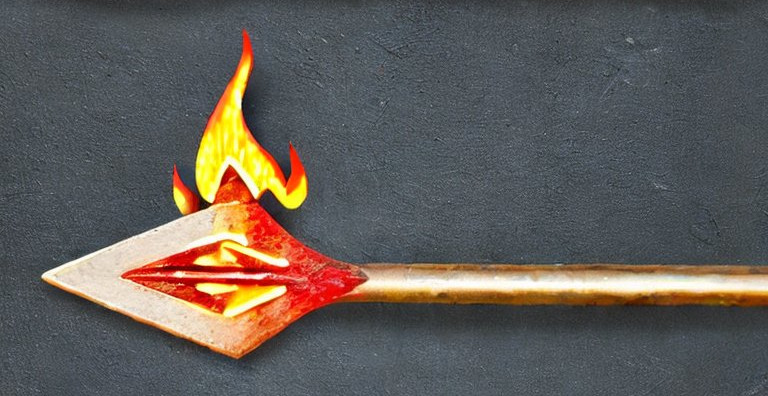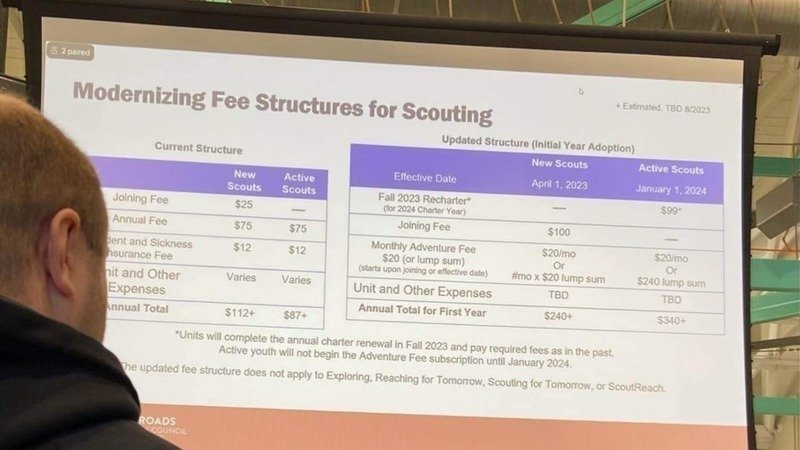BSA’s national organization tried to decimate Cub Scout camping. The base erupted, and national partly backed off! With its reaction, national yet again affirmed how it’s a culturally-rotted enemy of Scouting.
Scouting is among America’s most valuable traditions. We have to save it from the national organization. A necessary step is not allowing national to hide its malfeasance. That’s why I wrote this.

A story of arrogance
For decades, BSA did not regulate the length of a Cub Scout pack-organized campouts. It could be as many nights as the pack wanted.
True, BSA’s rules for Cub Scout pack-organized camping included the word “overnight” or “overnighter”. But that was widely understood only to distinguish from “day camp”, a kind of camp that does not include overnight stays. The national office’s own use of this word affirmed this understanding.
In February 2023, BSA blindsided its largest program, secretly adding a word to Cub Scout camping rules: “single overnighter” (August 2022 version, lacking “single”, and February 2023 version). This secret edit decimated camping programs of most packs, demoralizing families and volunteers.
Yet again, BSA’s national organization eroded trust. But this organization does not care: Following its longstanding habit, it acted hubristically, demonstrated hostility, and stalled for a long time before correcting itself. It has yet to apologize. (I’m expecting to see this same culture in Netflix’s upcoming Scouts Honor documentary. Not only is this rotted culture behind decades-long delays in addressing sex abuse, it’s behind this assault on Cub Scouts, it’s why national still clings to a “separate but equal” regime for girls, and it’s why the Order of the Arrow program has rampant brownface cosplay.)
As usual, the top-secret national-level volunteer committees made no public statements. Sitting on their hands is no surprise: too many of these committees are do-nothing, inertia-bound puppets of BSA’s bloated bureaucracy. (Some national committees are exceptions, and I value you! You must be more public and distance yourself from the puppet committees.)
Our national organization is arrogant. Arrogance prevents reform. Until we see clear signs that national wishes to reform, we must keep asking, “What is national’s next blunder?”
Why national thought it could get away with it
(This section is a brief diversion from the article’s topic. It provides context. I will eventually separate it into its own article.)
BSA’s national organization has an anti-leadership culture of mindless rulemongering. This culture expects all BSA members to have an obsession with rules in the mold of the Pharisees of the Bible. This is among the worst attributes of BSA’s moribund bureaucracy.
The national organization also benefits from a myth that rising to national is a sign of extraordinary competence. Place this atop mindless rulemongering, you get a “worship the gold epaulets” mentality. (Employees or volunteers with national roles wear gold epaulets.)
The rulemongering and gold-digging cultural aspects foster a third aspect: UNQUESTIONING OBEDIENCE! Following rules is simply one’s highest calling (again, more anti-leadership claptrap). Faced with ambiguity, the solution is to fabricate yet more rules, which induces a need for yet more bureaucracy. It’s a self-dealing system, creating phony work for long-tenured professionals and volunteers. It also negates concerns of the base, because of course the problem is you peasants declined to obey or follow our rules. (Incidentally, that explains national’s hostility to feedback.)
The alternative to this culture is thoughtful navigation of gray areas. That would be actual work, contradicting a fourth aspect of the national organization’s cultural problems: its main purpose is to provide cushy, make-work roles for those who were loyal to national’s bureaucracy for long enough.
Volunteer or professional, BSA’s career- and volunteer-role-advancement system’s terminal promise is to promote you far past your Peter-principle competence limit to a cushy “my career is here to die”, do-little, competence-optional role. No real performance expectations, just smile and wave. Professionals lightly manage fawning volunteer patsies they hand-selected into some puppet committee. All feign productivity and usefulness by reviewing numbers, signing NDas, and wasting everyone’s time with bureaucratic delaying tactics like pointless pilot programs and endless surveys that never lead to change.
Life is great, brought to you by UNQUESTIONING OBEDIENCE!
This time, it failed. The base erupted. The Cub Scout Volunteers Facebook group and other social-media forums exploded. Rulemongers were shoved aside, so national lost its usual defenders. Scores pledged to openly flout the new rule.
(Heading off a likely response: Rejecting mindless rulemongering is not endorsing anarchy. Many BSA rules are crucial, such as those that protect youth from abuse or the advancement program. Mindless approaches distracts what’s important and harms our ability to navigate gray areas.)
National used stupidthink to fabricate a rule
Insiders with direct knoweldge of the national organization’s thinking shared some insight, revealing how stupidity passes as rational thought in Irving. These insights are part of a false narrative, that national’s secret, February 2023 change was minor, just clarifying a longstanding policy.
Stupidthink #1: Just read the dictionary
In a robust social-media conversation on the secret revision, a national source shared the Merriman-Webster Dictionary and Dictionary.com definitions for “overnight”:

Paraphrase: “You dummies, why didn’t you check the dictionary?”
Let’s check those definitions: Dictionary.com‘s definition of “overnight” includes an adjective form: “done, made, occurring, or continuing during the night”. This definition does not convey a one-night limit. With several definitions that generally do not convey a one-night limit, Merriam-Webster‘s definition also does not clarify.
What this source conveyed, in a backhanded way, is national knew its policy was too vague to connote a one-night limit. In national’s culture, its appears to see its own quality problems as invitations to concoct arbitrary policy.
Stupidthink #2: It’s always been this way
A national-organization source conveyed that national believes the rule was always one-night campouts. The source backed that up by sharing an excerpt from the 1991 Guide to Safe Scouting:

This only affirms that national’s ambiguous language is a decades-old feature, not a bug.
If “overnight” was ever meant to be a single-night limit, that clarity exists only in the fever dream of some 1990s-era bureaucrat. Since this bureaucrat did not document his dream, we do not know his intent. Therefore, this 1991 excerpt does not provide useful guidance.
Stupidthink #3: BALOO conveys a single-night limit
Per a national source, the single-night limit “is reinforced by required BALOO training”. That is false. Nowhere in the BALOO training material is a single-night limit conveyed. While forms of “overnight” are used, they come across in the same way as the pre-February 2023 Guide to Safe Scouting.
The source further reinforced the fake news by sharing that BALOO “uses example of an overnight activity in the training”. While that is true, it is a mere case study in a training program. Case studies are not rules.
Stupidthink #4: National uses “overnight” consistently
Another national source conveyed that national consistently uses “overnight” to mean one night. Yet more fake news!
A trivial inspection of authoritative national documents reveals uses of “overnight” in ways that do not convey a one-night event:
- Accompanying the secret revision to the Guide to Safe Scouting was a secret revision to the Language of Scouting. As of February 21, 2023, its definition for “Webelos Scout overnighter” was “[a] one- or two-night campout”. A key national document legitimized an allegedly disallowed form of Cub Scout camping? That document was secretly changed no later than March 7, 2023 to read “[a] one night campout”. Why “secret”? Despite this revision, the document’s revision date, at its top, remains “February 2020”. Someone was covering tracks!
- Tenderfoot rank requirement 1.a.: “Present yourself to your leader, prepared for an overnight camping trip.” If the Scout prepared for the troop’s multi-night campout, this requirement cannot satisfied?
- Scouting’s Barriers to Abuse: “All adults staying overnight in connection with a Scouting activity must be currently registered as an adult volunteer or an adult program participant.” Wait, so adults staying two or more nights don’t need to be registered?
- Guide to Safe Scouting, Appendix 1: Age Appropriate Guidelines for Scouting Activities: Only “overnight” backpacking is allowed for Scouts BSA and Venturing. If troop members backpack, their campouts are limited to one night?
- Guide to Safe Scouting, Camping section: “Local council approval is needed for unit-coordinated overnight camping activities involving other units not chartered by the same organization.” Got it, so I can evade this requirement if I plan a two-night campout? Even more rich: This is the same document that BSA secretly revised in February 2023 to add “single” to the Cub Scout part! The very document that was revised is incoherent about the meaning of “overnight”!
The base never bought it
Fortunately for Scouting, few packs denied adventure to their Cub Scouts: The vast majority provided multi-night adventures before February 2023. My evidence comes from polls in some Facebook groups right after the February 2023 change. They got a huge response:

Of all councils, mine would have known
I am in Circle Ten Council. I was a den leader and Cubmaster of a huge pack for 10 years. We did 4-6 campouts each year, and all of them were multi-night. All other packs I knew of did multi-night campouts.
We were all open about it, not because we were flouting anything, but because multi-night campouts were not prohibited. If you told my council’s Cub Scout leaders that national limited Cub Scouts to one-night campouts, you would have been laughed out of the room.
BALOO training is essential training on Cub Scout pack camping. At least one leader present on a Cub Scout pack-organized campout must have completed that training. In my council, our BALOO trainers did not teach a one-night restriction. In fact, when I took BALOO training, we did a planning exercise for a two-night campout! And that is appropriate as, per above, the BALOO training materials do not convey a single-night limit.
If any council should have been aware of this one-night rule, it’s my council!
Circle Ten is large and reasonably run. Council administrators are aware of and follow national’s rules.
The national office is in our geographic territory:

The proximity lubricates relationships between council members and national employees and volunteers, many of whom are neighbors. It is common to see a national employees and volunteers at Circle Ten events.
It is also common to see professionals or volunteers move between my council and national positions. Our current Scout Executive came from national in 2017! Even better, he was a national Cub Scout division director! If a one-night limit was a rule, certainly my Scout Executive would have known.
Circle Ten Council has unparalleled proximity to and interplay with the national office. If national truly intended for Cub Scouts to be limited to one-night campouts, Circle Ten Council would have known. But we didn’t, and across the board, our Cub Scout packs openly practiced multi-night, pack-organized campouts! Why? Because there used to be no limit on camping nights!
Wait a second, some bought it
In the above chart, a minority of packs limited their campouts to one night.
Based on social-media discussions, some just preferred this. For example, if your pack is only 10 miles from a campground, a single-night campout can be convenient. That’s fine if it works for you!
But some packs are in councils that concocted a one-night limit. This is mere rulemongerism. Only reflecting local poor practices, it does not advance a case that national had a one-night rule.
Nobody knows why national did this
Why did national make this secret change? It may have been stupidthink. It may have been insurance. We don’t know!
The national organization is invited to explain itself publicly.
How national screwed the pooch
National screwed the pooch:
- It never consulted the base before making this change.
- It felt entitled to decimate a key program.
- It capriciously enacted an arbitrary change.
- It showed no remorse for its actions.
- Its professionals and volunteers who have responsibility for or influence over this clammed up for six months.
- Responsible or accountable parties from national stopped participating in social media, except for denying crisis by posting unrelated PR glurge.
- It threatened volunteers, which leads me to the next section…
National threatens adult memberships merely for disagreeing
Imagine you’re an adult leader. You were just blindsided by a devastating announcement: BSA decimated most Cub Scout camping.
In social media, you engage in a robust but respectful discussion to understand what just happened and why.
In that conversation, someone connected with national posts dictionary definitions of “overnight”. (I commented on that above.) A volunteer recognizes the definition-sharer as being connected to national. Without outing this person, that participant provides helpful feedback (top comment is the volunteer’s feedback, bottom comment is the national-affiliated person’s reply):

Color commentary on the national person’s reply:
- It starts with a false accusation that the volunteer is contradicting BSA policy. Um, no? There is no policy forbidding disagreement.
- Next is fake news, that the one-night limit is “not new policy”. As per above, the one-night rule was created in February 2023. Before then, there was no limit on nights of camping.
- Next is an absurd allegation, that Cub Scouts will be harmed by a second night of family camping. National has yet to substantiate why it believes this. Evidence-free assertions do not become rational simply because the person making the assertion wears gold epaulets.
- Finally, a threat to expel volunteers for disagreeing with the national organization. This is the reply’s last two sentences. It’s damning commentary on national’s hubris.
A national-affiliated person mentions the Scouter Code of Conduct in this context for one reason: To threaten expulsion of a volunteer.
Disagree with a national-organization epic screwup? Face expulsion!
This is unacceptable conduct for the national organization. It informed a point in a prior article about national’s ham-fisted hostility to feedback.
What the hell is wrong with our national organization?
It’s hard to set aside national’s blunder. It’s mind-bogglingly stupid for an adventure-focused organization to decimate its largest adventure program. It’s even stupider to do it secretly!
Then national amplified its blunder by hurling threat grenades at volunteers, clamming up, seeking no feedback, and not apologizing.
None of this is acceptable performance.
Yes, national finally relented. After stonewalling for half a year, a new, two-night limit on pack-organized camping starts September 1, 2023.
National is so chickenshit, the news had to first be leaked through local representatives. A few weeks after the leaks began, national finally bothered to communicate over an official channel. That mere peasants–err, I mean parents and volunteers–had to first find out via leaks conveys how unimportant our national organization thinks we are.
While it’s great that two nights of camping are now allowed, it’s just a correction of an epic screw up.
At the top, I wrote “partly backed off”. Remember that before February 2023, BSA did not limit camping nights for Cub Scout packs. The new rule bans three-night pack-organized campouts, which makes me sad. I led my old pack on phenomenal three-night adventures to Enchanted Rock/Fredericksburg, Caprock Canyon, and San Antonio. These were safe and reasonable, provided exceptional adventures, and created lifetime memories. We pulled them off without a hitch. Now they are banned.
How do we fix this?
National corrected itself, so move on? Not if you value Scouting!
If we allow the national organization to keep sweeping its blunders this under the rug, we are not holding it accountable. Without accountability, national will keep attacking Scouting!
National has a cloistered culture. Fed by a defective career-advancement system that mainly rewards those most loyal to its moribund bureaucracy, national views itself as its main customer. This is evidenced by its resistance to feedback and endemic throwback-reactionary culture.
We can’t “forgive and forget”. We can’t work within a system designed to protect failure. Either is simply enabling national’s malfeasance.
Without public pressure, national’s malfeasance will never end. We’ll also never get fixes for past blunders that still haunt us. For example, the “separate but equal” regime for girls, which rests on misinformation and racist, sexist folklore? That’s another epic screwup, and it’s still harming Cub Scout 5th graders and all of Scouts BSA. (The ban could be rapidly deleted. That takes leadership, which is notably absent in the national organization.)
The current national organization must improve. If it’s willing to, great, we can keep it around. If not, we need to replace it.
Hopefully the national organization will be open about its deficiencies and create a plan to correct them. As long as its executing on this plan, we can work with it. Until then, it’s crucial to hold the national organization publicly accountable for its cultural rot.
Appendix: A note about those who didn’t read “overnight” onerously
As mentioned earlier, BSA has a cultural problem with obsessions over rules. This devalues important rules, makes navigating gray areas onerous, and encourages us to grab complexity from the jaws of simplicity. This makes BSA less safe, and it distracts us from program excellence.
It is healthy to prefer simplicity! That is a longstanding truism:
- “Simplicity is the ultimate sophistication.” -Leonardo da Vinci
- “So the writer who breeds more words than he needs, is making a chore for the reader who reads.” -Dr. Seuss
- “Less is more.” -Mies van der Rohe
- “Brevity is the soul of wit.” -Shakespeare
This doesn’t mean the simplest answer is always right. But seeking simplicity remains wise and rational.
Part of seeking simplicity is reducing the number of rules we face. This is rational: The more you are regulated, the more of your time is diverted from productive activity. Volunteers want to deliver great programs. Less energy diverted to compliance is more energy to do what we’re here for.
When we navigated the bare word “overnight” in a way that didn’t limit to a one-night event, we eliminated a rule while upholding contextually valid definitions of “overnight”. No pretzeled logic involved! One less rule, more flexibility to deliver great adventures. Win/win!
While I’ve waxed philosophically, this has some precedent in contract law.
Every adult leader is contractually obligated to follow the Guide to Safe Scouting; it’s part of what an adult leader agrees to when signing an adult leader application.
Under the doctrine of contra proferentem, ambiguity in contracts are resolved against the interests of the party who drafted the language. BSA’s use of “overnight” was ambiguous. Through its actions, the national organization demonstrated it believed its interest is aligned with “overnight” conveying a one-night limit. Had this issue been litigated, the contra proferentem doctrine may have harmed BSA’s case.












